Italy
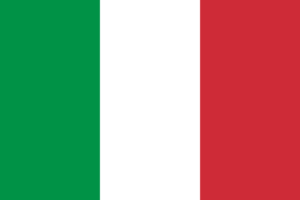
-
- Accession to the EU: 1957, founding member
- Accession to the Council of Europe: 1949
- Surface area: 301 253 km2
- Population: 58.76 million inhabitants (2023)
- Capital city: Rome (2,7 million inhabitants)
- Official languages: Italian
- Currency: Euro
- Political system: Republic
- Head of state: Sergio Mattarella was re-elected President on 29 January 2022
- Head of government : Giorgia Meloni appointed Prime Minister on 21 October 2022
- International code: + 39
- National holiday: June 2nd
- The Italian members of the European Parliament
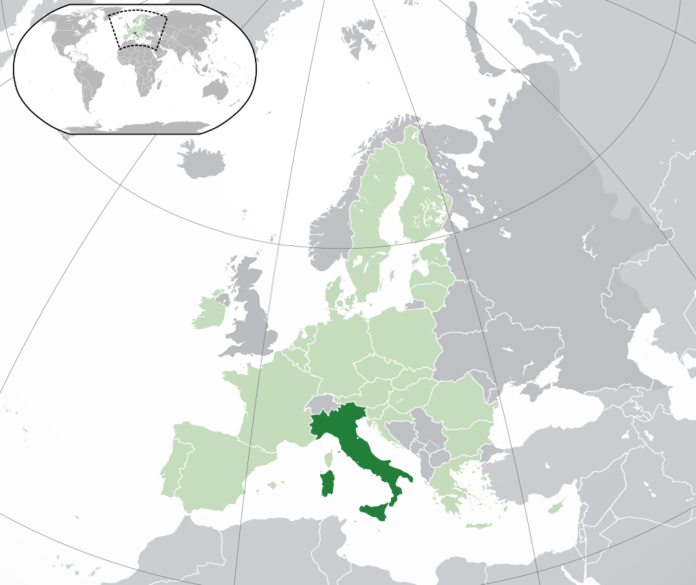
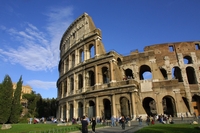 Thanks to its wealth and strategic position, Italy was coveted by some of Europe’s leading monarchs for many years. Dominated by Emperor Charles Quint in the 16th century, and later by Napoleon in the 19th century, it was only more recently that the country achieved unity and stability.
Thanks to its wealth and strategic position, Italy was coveted by some of Europe’s leading monarchs for many years. Dominated by Emperor Charles Quint in the 16th century, and later by Napoleon in the 19th century, it was only more recently that the country achieved unity and stability.Colosseum, Rome
- 1815-1831 Occupation by Austria following the Congress of Vienna. Secret societies such as the “Carbonari” are formed to fight for national unity.
- 1831 Giuseppe Mazzini sets up a new organisation, “Young Italy,” aimed at bringing about the liberation and unification of Italy.
- 1848 The Kingdom of Piedmont-Sardinia supports the independence movement with the aim of driving out the Austrian troops.
- 1861 The Kingdom of Italy is proclaimed. King Victor Emmanuel II is crowned on April 27th.
- 1871 Rome becomes the capital of Italy.
- 1882 Italy joins the Triple Alliance with Germany and Austria-Hungary.
- 1915 Although the alliance is renewed in 1907, Italy enters the war against Germany.
- 1920 Italy signs the Treaty of Rapallo with Yugoslavia.
- 1922 Victor Emmanuel III asks Benito Mussolini to take office and to form a new government.
- 1926 The proclamation of various fascist laws considerably curtails fundamental freedoms.
- 1939 The Pact of Steel is signed with Germany.
- 1940 Italy sides with Germany during the Second World War.
- 1946 Proclamation of the Republic.
- 1949 Italy is a founding member of NATO.
- 1957 Along with five other nations, Italy forms the EEC.
- 1970-1980 The country’s economic difficulties lead to increasing violence. The Prime Minister, Aldo Moro, is assassinated.
- 1999 The former Prime Minister, Romano Prodi, is appointed as President of the European Commission for the period 1999-2004.
- 2001 Silvio Berlusconi is appointed as Prime Minister.
- 2006 The former president of the European Commission, Romano Prodi, wins the parliamentary elections with his center-left coalition and becomes president.
- 2008 The leader of the opposition, Silvio Berlusconi, wins the parliamentary and senatorial elections.
- 2014 Italian presidency of the Council of the european union.
- 2019 The Italian David Sassoli was elected as President of the European Parliament. He will lead Parliament until January 2022.
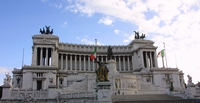 If we believe the legend recounted by the poet Virgil in the Aeneid, Rome was founded by Romulus in 753 BC. Since then, the city of Julius Caesar has constantly expanded to become a leading cultural, artistic and intellectual center. The unrivalled heritage of the Italian capital has made Rome an internationally renowned city. Its many palaces, museums, and legendary monuments all bear witness to its prestigious past, including the Roman Forum, the Castel Sant’Angelo, the Vatican museums, the Coliseum, the Trevi fountain and Saint Peter’s Square. Indeed, the long years of domination enjoyed by the Roman Empire have given this capital an outstanding architectural diversity. The Vatican City, the headquarters of the papacy, continues the tradition of richness and international prestige enjoyed by the “Eternal City”. Rome is a leading artistic and historical center. Its unique charm and friendly atmosphere make it a tourist destination that cannot be missed.
If we believe the legend recounted by the poet Virgil in the Aeneid, Rome was founded by Romulus in 753 BC. Since then, the city of Julius Caesar has constantly expanded to become a leading cultural, artistic and intellectual center. The unrivalled heritage of the Italian capital has made Rome an internationally renowned city. Its many palaces, museums, and legendary monuments all bear witness to its prestigious past, including the Roman Forum, the Castel Sant’Angelo, the Vatican museums, the Coliseum, the Trevi fountain and Saint Peter’s Square. Indeed, the long years of domination enjoyed by the Roman Empire have given this capital an outstanding architectural diversity. The Vatican City, the headquarters of the papacy, continues the tradition of richness and international prestige enjoyed by the “Eternal City”. Rome is a leading artistic and historical center. Its unique charm and friendly atmosphere make it a tourist destination that cannot be missed.
Place of Venise, Rome
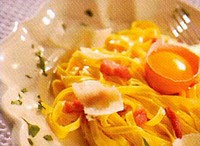
 Italy is famous for its delicious cuisine. Its specialities are renowned the world over for their sheer variety and originality. The best known Italian dish is pasta, which is the main component of Italian cooking. The limitless number of shapes and tastes of Italian pasta make it the Italian dish par excellence, including: Spaghetti, Tortellini, Macaroni, Penne and Tagliatelle. Pasta can be filled as in the case of Tortellini or Ravioli, accompanied by carbonara sauce, by Pesto, or seasoned with tomato, garlic, basil or olive oil. Italy is also famous for its pizzas, tiramisu, real Espresso and Cappuccino coffee, its cheeses (Mozzarella, Parmesan and Gorgonzola), its cold meats (salami, Parma ham and Coppa), its wine (Chianti and Marsala) and its liqueurs (Strega or Galliano). Italian cuisine is also characterised by its regional diversity. Piedmont and the Aoste valley are famous for their Alba white truffles and their potato gnocchis, Lombardy for its traditional sausage, the “Luganega” for its Mascarpone, while Venetia and Frioul are well known for their polenta. The culinary habits of the Italians include a breakfast, “Colazione”, a substantial lunch, “Pranzo”, (usually including pasta, meat or fish) and a somewhat lighter dinner, “Cena”.
Italy is famous for its delicious cuisine. Its specialities are renowned the world over for their sheer variety and originality. The best known Italian dish is pasta, which is the main component of Italian cooking. The limitless number of shapes and tastes of Italian pasta make it the Italian dish par excellence, including: Spaghetti, Tortellini, Macaroni, Penne and Tagliatelle. Pasta can be filled as in the case of Tortellini or Ravioli, accompanied by carbonara sauce, by Pesto, or seasoned with tomato, garlic, basil or olive oil. Italy is also famous for its pizzas, tiramisu, real Espresso and Cappuccino coffee, its cheeses (Mozzarella, Parmesan and Gorgonzola), its cold meats (salami, Parma ham and Coppa), its wine (Chianti and Marsala) and its liqueurs (Strega or Galliano). Italian cuisine is also characterised by its regional diversity. Piedmont and the Aoste valley are famous for their Alba white truffles and their potato gnocchis, Lombardy for its traditional sausage, the “Luganega” for its Mascarpone, while Venetia and Frioul are well known for their polenta. The culinary habits of the Italians include a breakfast, “Colazione”, a substantial lunch, “Pranzo”, (usually including pasta, meat or fish) and a somewhat lighter dinner, “Cena”.
© touristie.com
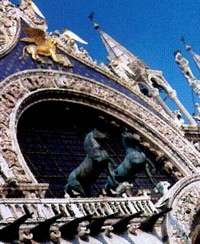 The Renaissance (the period of Western European history from the early 15th century to the late 16th century), was a transitional period between the Middle Ages and modern times which saw a large number of political, economic, social, intellectual and above all cultural and artistic changes occurring. The Renaissance originated in Italy. It was here that the arts emerged in all their splendour, chiefly including painting, architecture, and sculpture. In the painting field, artists such as Leonardo da Vinci, Michelangelo, Raphael, and Titian created masterpieces such as Leonardo da Vinci’s The Last Supper. Philosophers such as Tommaso Campanella, scientists such as Galileo, researchers such as Machiavelli, poets like Arioste, and musicians such as Monteverdi stood out in their respective fields and made Italy the epicentre of the new artistic and intellectual wave sweeping Europe. The Renaissance also resulted in the creation of many architectural masterpieces. Towns such as Florence, Rome, Venice, Milan and Naples became leading beacons of architectural and sculptural splendour.
The Renaissance (the period of Western European history from the early 15th century to the late 16th century), was a transitional period between the Middle Ages and modern times which saw a large number of political, economic, social, intellectual and above all cultural and artistic changes occurring. The Renaissance originated in Italy. It was here that the arts emerged in all their splendour, chiefly including painting, architecture, and sculpture. In the painting field, artists such as Leonardo da Vinci, Michelangelo, Raphael, and Titian created masterpieces such as Leonardo da Vinci’s The Last Supper. Philosophers such as Tommaso Campanella, scientists such as Galileo, researchers such as Machiavelli, poets like Arioste, and musicians such as Monteverdi stood out in their respective fields and made Italy the epicentre of the new artistic and intellectual wave sweeping Europe. The Renaissance also resulted in the creation of many architectural masterpieces. Towns such as Florence, Rome, Venice, Milan and Naples became leading beacons of architectural and sculptural splendour.
© touristie.com
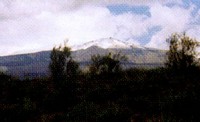 Geologically, Italy is a young country. Consequently, its territory includes a certain number of active volcanoes including Vesuvius, Etna, Vulcano and Stromboli.
Geologically, Italy is a young country. Consequently, its territory includes a certain number of active volcanoes including Vesuvius, Etna, Vulcano and Stromboli.